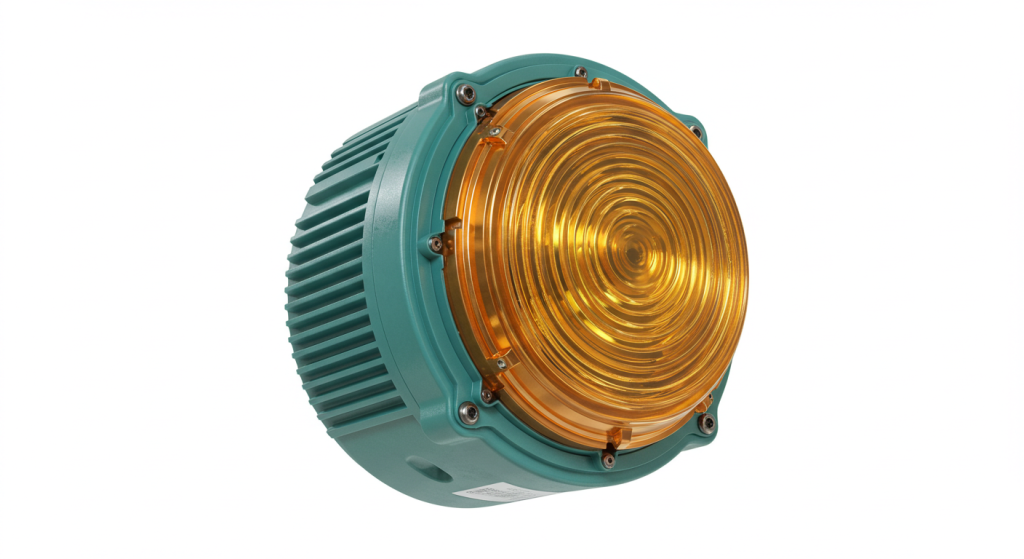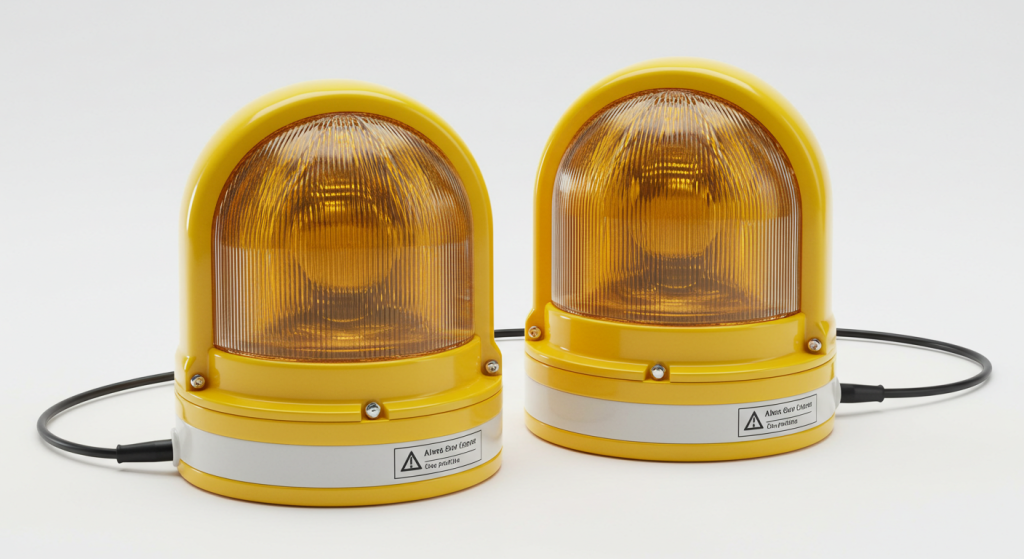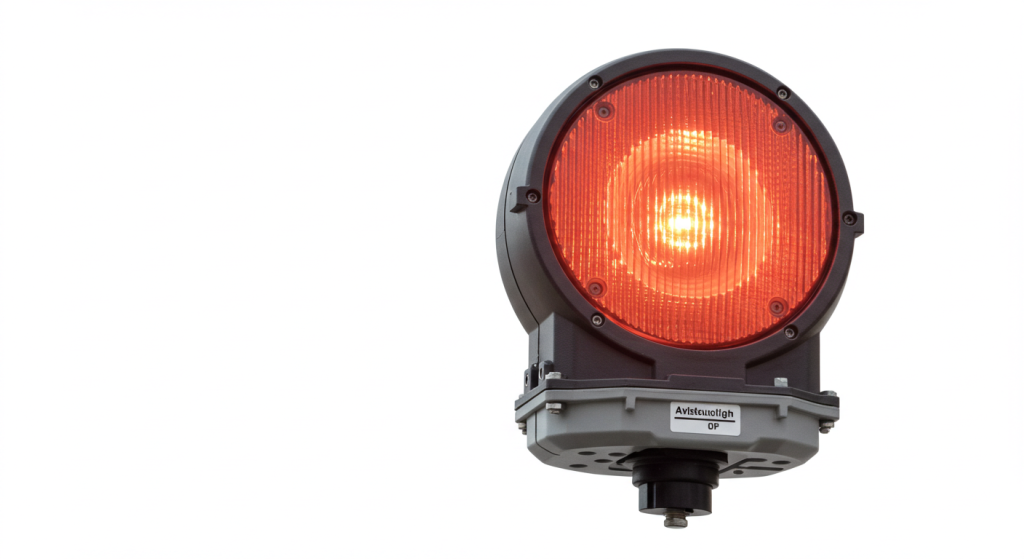Ensuring safe helicopter operations, especially in challenging conditions, relies on effective visual aids. Among the critical components of a helideck is the perimeter lighting system. So, What is helideck perimeter light, and why is it so important? Helideck perimeter lights are specialized luminaires that define the boundaries of the landing area, providing essential guidance to pilots during nighttime or low-visibility operations. These lights are not just about illumination; they are a key component in overall safety for helicopter takeoffs and landings. In the complex world of aviation, understanding this system is just as important as understanding other crucial aspects like the Light of Airport Lighthouse, which also provides critical navigational guidance. This article will explore the intricacies of helideck perimeter lighting, its importance, and other aspects of helideck operations, while also touching on related topics like airport runway lighting and approach guidance systems.

Understanding Helideck Perimeter Lighting
Helideck perimeter lights are a series of lights installed around the edge of a helideck. Their primary function is to clearly mark the landing area’s boundaries, allowing pilots to visually identify the available space for approach and landing. These lights are designed to be easily visible from a variety of angles, and are designed to perform reliably in harsh environments. This kind of lighting system is a vital component, just as important as airport systems, as many helicopters are used in emergency services. So, when also asking about What is High Intensity Runway Lights, and the role it plays, it also helps one to understand how essential all aviation lighting systems really are.
Key Functions of Helideck Perimeter Lights
- Boundary Definition: The main purpose is to clearly define the perimeter of the helideck, which can be especially important at night and in conditions of low visibility.
- Approach Guidance: Lights help guide the helicopter on the approach path by providing visual cues as they get closer to the helideck.
- Safety Enhancement: The lights significantly reduce the risk of landing errors and accidents, especially during night operations or challenging weather conditions.
- Compliance: Perimeter lights must meet certain regulatory standards to ensure their effectiveness and reliability.

Types of Helideck Perimeter Lights
Helideck perimeter lights can vary based on technology, light output and mounting style. However, the primary goal remains consistent: to enhance the visual identification of the helideck’s boundaries.
Inset Lights
Inset lights are flush-mounted into the helideck surface. This design minimizes any protrusion that might interfere with helicopter operations and is especially popular on smaller helidecks. Inset lights are very robust, and are designed to withstand the weight of an aircraft landing on the surface.
Raised Lights
Raised lights sit above the deck surface on small mountings. They are generally easier to install and maintain than inset lights. Raised lights can be an ideal choice for helipads that are already in use, as they are easily bolted onto the surface.
LED Technology
Most modern helideck perimeter lights utilize LED technology, thanks to their energy efficiency, long lifespan, and low maintenance requirements. LED lights also offer superior color accuracy and a wider range of dimming options than older lighting systems.
Importance of Helideck Lighting
Helideck lighting is not simply an optional addition, it is an essential safety feature that has many benefits for a number of user groups:
Enhanced Safety
Clearly defined helideck boundaries allow pilots to land safely, particularly in poor visibility conditions. This is critical for all helicopter operations, whether civilian, military or emergency services, and when considering any aviation light source it is key that the system delivers the best safety features.
Compliance with Regulations
Aviation authorities have strict regulations about helideck lighting to ensure consistent standards of safety and operation. Compliance is mandatory and helps to ensure the lights are fit for purpose. It is also worth noting that the regulations may vary depending on the location and country, so it is essential to follow the guidance from the relevant authority.
Operational Efficiency
Good lighting helps to facilitate smooth operations, reducing delays and allowing for faster turnaround times. A well lit helipad is a key component in safe and efficient helicopter operations, and the overall lighting should be considered.
Reduced Risk of Accidents
Proper lighting greatly reduces the risk of accidents, particularly during night landings and in challenging weather conditions. In areas where the weather may change rapidly, it is vital that the lighting system be highly reliable.

Regulatory Requirements
Helideck perimeter lights must adhere to strict guidelines set by aviation authorities. Some of the key regulatory requirements include:
- Light Intensity: There are specific standards for light intensity to guarantee visibility in all conditions.
- Color Specification: Lights are usually specified to be white or green in color.
- Beam Angle: Lights need to be visible from the normal approach angle.
- Durability: Lights must withstand harsh weather and physical impact.
- Reliability: Lights must be dependable and have long-lasting performance with low maintenance requirements.
Perimeter Approach Lights
Beyond the perimeter lights, the concept of perimeter approach lights is also important to consider. While standard perimeter lights mark the boundary, approach lights assist the pilot during the final approach. So what is What is perimeter approach lights? and how do they differ? Approach lights are usually installed adjacent to the perimeter lighting, and they provide the pilot with visual cues to the correct approach path.
Approach lights are designed to lead pilots from the initial stages of an approach, until they have successfully landed on the helipad. Therefore, when designing a new helipad, it is essential that both systems of lighting are well thought out and positioned to ensure the highest level of safety and efficient operations.
The Difference Between a Helideck and a Heliport
While the terms helideck and heliport are often used interchangeably, they do have different definitions, so it is worth asking: What is the difference between a helideck and a heliport?
Helideck
A helideck is usually a landing area located on a structure such as a ship, an offshore oil platform, or on the top of a building. Helidecks are designed to be robust and resilient enough to handle the weight and impact of landing aircraft. They often have limited support facilities and may rely on the main structure for power and other utilities.
Heliport
A heliport is a more comprehensive landing facility, typically found on the ground and comprising more infrastructure. This may include parking areas, maintenance facilities and passenger terminals. Heliports are often located at airports, in city centers, or in remote locations. They tend to have better ground support facilities than a standard helideck.
Helipad Lighting
The term helipad is often used as an overall term for a landing area for helicopters, and therefore, when asking: What is helipad light?, it should be noted that this term encompasses all the different lighting systems used at both a helideck and a heliport. This can include the perimeter lights and approach lights that we have already discussed, but it may also cover all the other lighting systems used in the overall helipad area.
These lighting systems can include flood lighting, search lights, and also hazard lights, all of which play a key role in safe helicopter operations. Any light source in the area should be reliable, robust and long-lasting and designed for the environment in which it will be operating.
The D Value of a Helideck
When considering the lighting requirements for a helideck, one may come across the term ‘D value’, so understanding: What is the D value of the helideck? is important for any project.
The D value, also known as the ‘diameter’ or ‘dimension’ value, refers to the overall size and dimensions of the helideck landing area. This is a key factor in determining the positioning of the lights, and the number of lights required to meet the regulations. The D value is used as a benchmark for all other requirements, such as paint markings, safety equipment and operational procedures, so it is important to consider this during the planning phases of any project.
Installation and Maintenance
Proper installation and routine maintenance are essential for the long-term performance of helideck perimeter lights. Following the recommendations of the manufacturer is important, and you may also need to call in experts to ensure the lights are installed in the optimum position.
Installation
- Professional Installation: Engage qualified technicians to ensure proper installation, as improper installation can result in light malfunction.
- Correct Mounting: Ensure the lights are mounted securely and aligned correctly.
- Wiring: All wiring must be weather-proof and comply with electrical standards.
Maintenance
- Routine Inspections: Conduct regular inspections to identify any damage, corrosion or malfunction.
- Cleaning: Clean the lights regularly to ensure optimal brightness.
- Replacements: Replace faulty components or bulbs promptly to avoid issues.
- Testing: Test all lights regularly to ensure they are operating correctly.
The Role of the Light of Airport Lighthouse
While helideck lighting has specific functions, the role of other navigational aids like a lighthouse is still worth understanding, therefore, exploring the concept of the Light of Airport Lighthouse, and how it relates to all other lighting types is important. Lighthouse systems are used at major airfields to provide a high intensity light source to aid in navigation, especially in areas where other ground lights may be confusing. These lights often rotate and use very high intensity bulbs to aid visibility over long distances.
Lighthouses are an integral part of navigation, and they, combined with helipad lights and other airport light systems, help to make aviation as safe as possible, for all users and all aircraft types.
High Intensity Runway Lights
Runway lighting systems are another key feature of any airfield and it is worth exploring What is High Intensity Runway Lights and how that is different from other lighting types. These lights are designed to give guidance on approach and when the aircraft is on the runway. They are used in large numbers and are carefully spaced to provide clear visual cues. High intensity runway lights are designed to perform reliably and they usually have multiple fail-safes to ensure they are operational at all times.
Many modern systems utilize LED lights, for reliability, long life, and their ability to produce a wide range of colors as required by the regulations. Runway lighting systems are another key element in overall safety.
Conclusion
Understanding What is helideck perimeter light is crucial for anyone involved in helicopter operations, whether you are a pilot, facility manager, or a general aviation enthusiast. These lights play a critical role in safety, operational efficiency, and compliance with aviation regulations. By selecting and maintaining a robust lighting system, the overall safety of helideck operations will be significantly enhanced. Also, understanding other aviation lighting systems like Light of Airport Lighthouse, and What is High Intensity Runway Lights helps to give a clearer picture of all the visual aids used in aviation. Investing in quality helipad lighting is not just a matter of compliance; it’s a matter of prioritizing the safety and efficiency of all air operations.
| Topic | Key Points |
|---|---|
| What is helideck perimeter light | Defines the boundaries of helideck, offers guidance to pilots, crucial for safety. |
| Light of Airport Lighthouse | Provides long-range navigational guidance for aircraft, often used at major airfields. |
| What is High Intensity Runway Lights | Guidance on approach and on runway, designed for reliability, often using LED. |
| What is perimeter approach lights? | Assists the pilot in the final approach to the helideck. |
| What is the difference between a helideck and a heliport? | Helideck is a landing area on a structure, Heliport is a ground facility with more support. |
| What is helipad light? | General term for all lighting used at a helipad, including perimeter, approach, flood and hazard lighting. |
| What is the D value of the helideck? | The size and dimensions of the helideck used to determine other aspects of the design. |